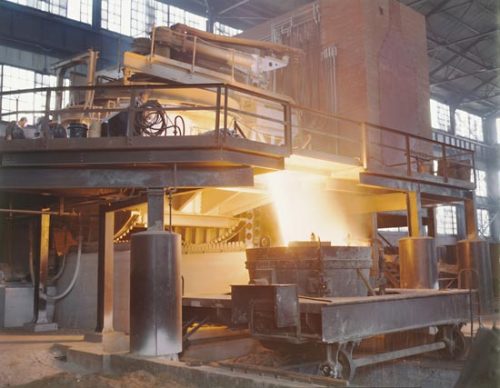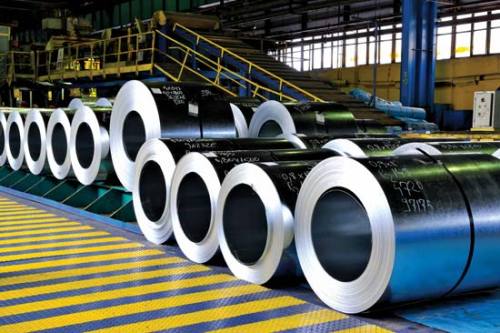Alloys: SteelAccording to Dictionary.com, steel is “any of various modified forms of iron, art
Alloys: SteelAccording to Dictionary.com, steel is “any of various modified forms of iron, artificially produced, having a carbon content less than that of pig iron and more than that of wrought iron, and having qualities of hardness, elasticity, and strength varying according to composition and heat treatment: generally categorized as having a high, medium, or low-carbon content”. Perhaps the most well known alloy around, as well as one of the most common materials in the world, steel is essentially iron with a small percentage of carbon (and, on occasion, one or more other elements). Not enough carbon and you’re stuck with wrought iron, too much carbon and you get cast iron. The graph above is a binary iron-carbon phase diagram that goes from zero percent carbon to about 6.5 percent, illustrating the various phases that can form. Steel has been known about since ancient times, some pieces dating back to 1800 BC, but it was the invention of the Bessemer process during the industrial revolution that really popularized the alloy. (Technically, similar methods had been used before, particularly in China and Japan, but Henry Bessemer invented the modern method, industrializing it and obtaining a patent in 1856.)Mainly used in construction, the alloy has been used for almost every possible application: from office furniture to steel wool, from bulldozers to washing machines, and from wires to watches, the possibilities are pretty much endless. Steel is also one of the world’s most-recycled materials, able to be used more than once, with a recycling rate of over 60% globally.The addition of carbon allows the steel to be stronger than the iron it’s made from. Adding nickel and manganese increases its tensile strength, chromium increases hardness and melting temperature, and vanadium also increases hardness while making it less prone to metal fatigue. Stainless steel has at least eleven percent chromium, whereas Hadfield steel (which resists wearing) contains twelve to fourteen percent manganese. Check out these links for more information on the effects of adding certain elements. Sources: 1 (top images), 2 (bottom images) -- source link
Tumblr Blog : materialsscienceandengineering.tumblr.com
#materials science#science#alloys#metals#carbon#mymsepost#materialsposts



